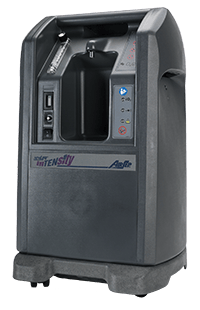
Medicare can be complicated, especially when you’re trying to navigate all the available options. One of the most popular alternatives to original Medicare is Medicare Advantage, also known as Medicare Part C. People may choose it because of its bundled coverage, additional features, and low premiums. This article breaks down what Medicare Advantage is, how it differs from original Medicare, and what you need to know if you’re considering signing up for this type of plan.
What are Medicare and Medicare Advantage?
Medicare is a federal health insurance program designed primarily for people aged 65 and older, though certain younger individuals with disabilities may also qualify. It consists of several parts: Part A, which covers hospital services, and Part B, which covers medical services, together form what is commonly known as original Medicare. There is also Part D, which provides prescription drug coverage.
Medicare Advantage is an alternative to original Medicare. Instead of receiving coverage directly from the federal government, beneficiaries who choose Medicare Advantage receive their Medicare coverage through a Medicare-approved private insurance company. These plans are required to offer coverage for the same hospital and medical services as original Medicare, but they often come with additional benefits and services that are not included in the standard Medicare package.
Who provides Medicare Advantage plans?
Medicare Advantage plans are offered by private insurance companies that have been approved by Medicare. These insurers enter into agreements with the federal government to provide Medicare services to beneficiaries. While the government oversees the program, Medicare Advantage plans operate through private companies, which allows for some flexibility in plan structures and additional benefits. Each insurer sets its own rules about costs and what is included in the plan, so plans can vary widely depending on provider and region.
When to enroll in or switch to Medicare Advantage
People can enroll in or switch to Medicare Advantage during specific time frames. The initial enrollment period (IEP) for Medicare begins three months before you turn 65 and extends until three months after your 65th birthday. During this time, you can sign up for Medicare and choose to enroll in a Medicare Advantage plan.
If you don’t enroll during this period, there is an annual open enrollment period (OEP) that runs from October 15 to December 7 each year. During this time, you can switch from original Medicare to Medicare Advantage, change between different Medicare Advantage plans, or drop your Medicare Advantage plan and return to original Medicare. Special enrollment periods (SEPs) allow you to enroll outside these windows under certain circumstances, such as if you move or lose other health coverage.
What’s included in a Medicare Advantage plan?
Medicare Advantage plans are required to provide at least the same level of coverage as original Medicare, including hospital services (Part A) and medical services (Part B). In many cases, Medicare Advantage plans also include prescription drug coverage (Part D), so you don’t have to enroll in a separate plan to cover your medications.
This convenience is one of Medicare Advantage’s key selling points, as it combines multiple aspects of health care coverage into one plan. However, coverage details can vary from one plan to another, so it’s crucial to review each plan’s specifics before enrolling.
Additional inclusions
Beyond hospital, medical, and prescription drug coverage, many Medicare Advantage plans offer additional services that original Medicare does not cover. These may include routine vision and dental care, hearing aids, and wellness programs like gym memberships.
In some cases, Medicare Advantage plans offer coverage for transportation to medical appointments or include home care services, which can be especially valuable for seniors who need assistance with activities of daily living, like bathing and dressing.
Special needs plans (SNPs) are a type of Medicare Advantage plan designed for individuals with specific health conditions. These often include more targeted coverage and care coordination for chronic conditions such as diabetes, heart disease, or mental health issues.
Costs
The cost of a Medicare Advantage plan varies based on factors like the plan you choose, where you live, and the insurance company providing the plan. Typically, Medicare Advantage plans charge a monthly premium, which may be as low as $0, depending on the insurer and the plan’s benefits. This premium is in addition to the Part B premium that all beneficiaries must pay. However, even with low premiums, there may be additional costs, such as copayments, coinsurance, and deductibles, particularly if you see specialists or require hospitalization.
It’s important to note that while Medicare Advantage plans often have lower out-of-pocket costs than original Medicare, there can be trade-offs in terms of flexibility, especially if the plan has a narrow provider network.
Considerations when deciding on a Medicare Advantage plan
Choosing the right Medicare Advantage plan requires evaluating your health care needs and budget. One of the biggest considerations is the plan’s network of doctors and hospitals. Unlike original Medicare, which allows you to see any provider in the country who accepts Medicare, many Medicare Advantage plans are limited to a network of providers. If you see doctors outside the network, you may pay more for care.
You should also look at the plan’s out-of-pocket maximum, which is the most you’ll have to pay for health care in a year. Some plans have low out-of-pocket maximums, while others are higher, so it’s important to weigh this factor against the plan’s premium and copays.
Pros of Medicare Advantage
Medicare Advantage plans offer several advantages. One of the biggest benefits is the combination of services in a single plan. Instead of enrolling in the separate parts of original Medicare, possibly in addition to a supplemental insurance plan, you can bundle everything together under a Medicare Advantage plan. Many plans also cover additional services, such as dental, vision, and hearing, that original Medicare doesn’t provide.
Another pro is the potential for lower out-of-pocket costs. Some Medicare Advantage plans offer lower premiums than the combined costs of original Medicare and a separate prescription drug plan.
Cons of Medicare Advantage
However, Medicare Advantage plans aren’t perfect. One of the main drawbacks is the limitation on providers. If you prefer to see specialists or doctors outside of the plan’s network, you may face higher costs or find that certain services aren’t covered at all. The variability of benefits between plans can also be a downside, as not all plans offer the same extra services or prescription drug coverage. You may also need to obtain prior authorization in order to receive coverage for certain services.
Additionally, if you travel frequently or live in multiple states, Medicare Advantage plans may not be ideal because they often have regionally restricted networks. Original Medicare, by contrast, is accepted nationwide by any provider who takes Medicare.
How to find a provider
Finding a Medicare Advantage provider involves a bit of research. Medicare.gov offers a plan finder tool that lets you search for plans by entering your zip code. You can compare different options based on premiums, out-of-pocket costs, and the services offered. Alternatively, you can work with a licensed insurance broker specializing in Medicare to help guide you through the process and find the right plan for your needs.
What to do when enrolling
When you’ve chosen a Medicare Advantage plan, you can enroll either directly through the insurance company or by using the Medicare website during the open enrollment periods. Make sure to gather all necessary documentation, including your Medicare card and personal information, to streamline the enrollment process.
Wrapping it up
Medicare Advantage offers a comprehensive alternative to original Medicare, often with added benefits like dental, vision, and prescription drug coverage. While these plans can be an excellent choice for many individuals, it’s essential to carefully evaluate your health care needs, budget, and plan specifics before enrolling. Understanding both the advantages and potential drawbacks of Medicare Advantage will help ensure you make the right decision for your health and financial well-being.








